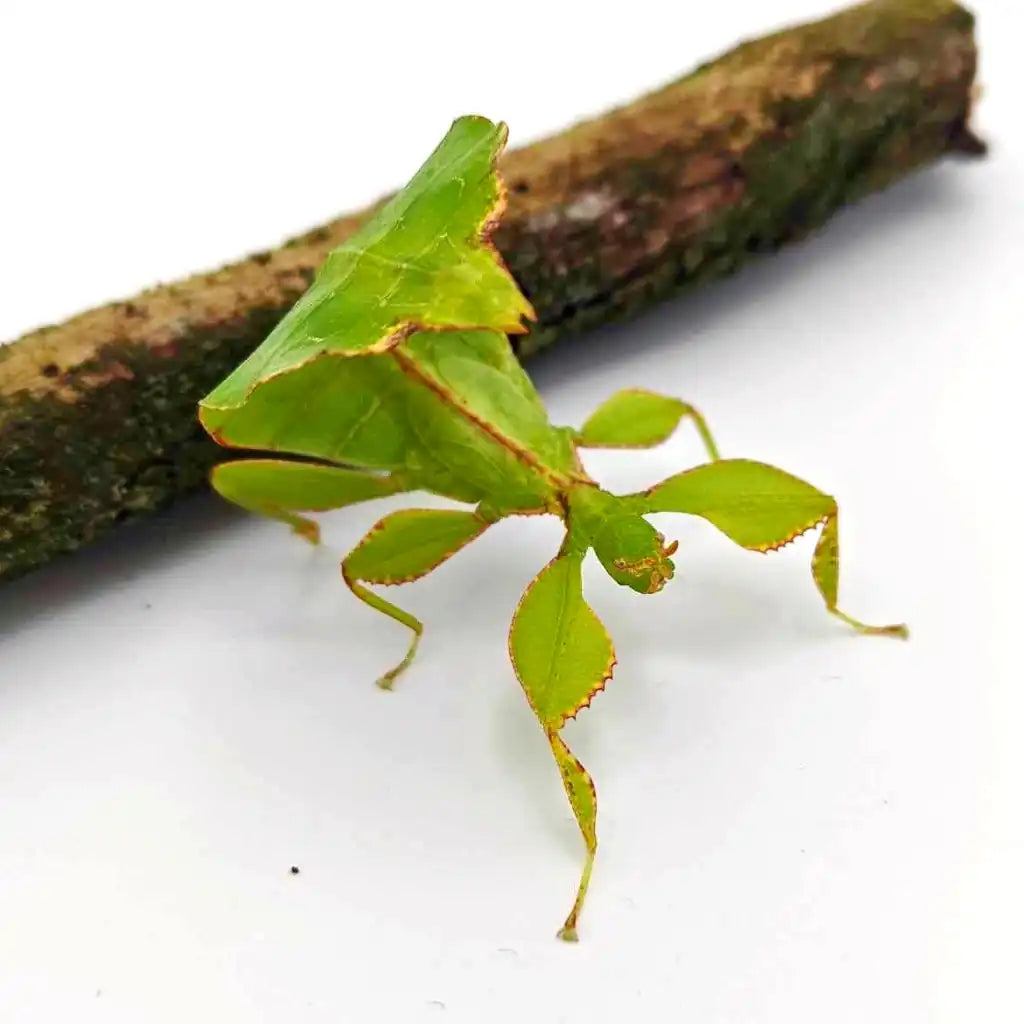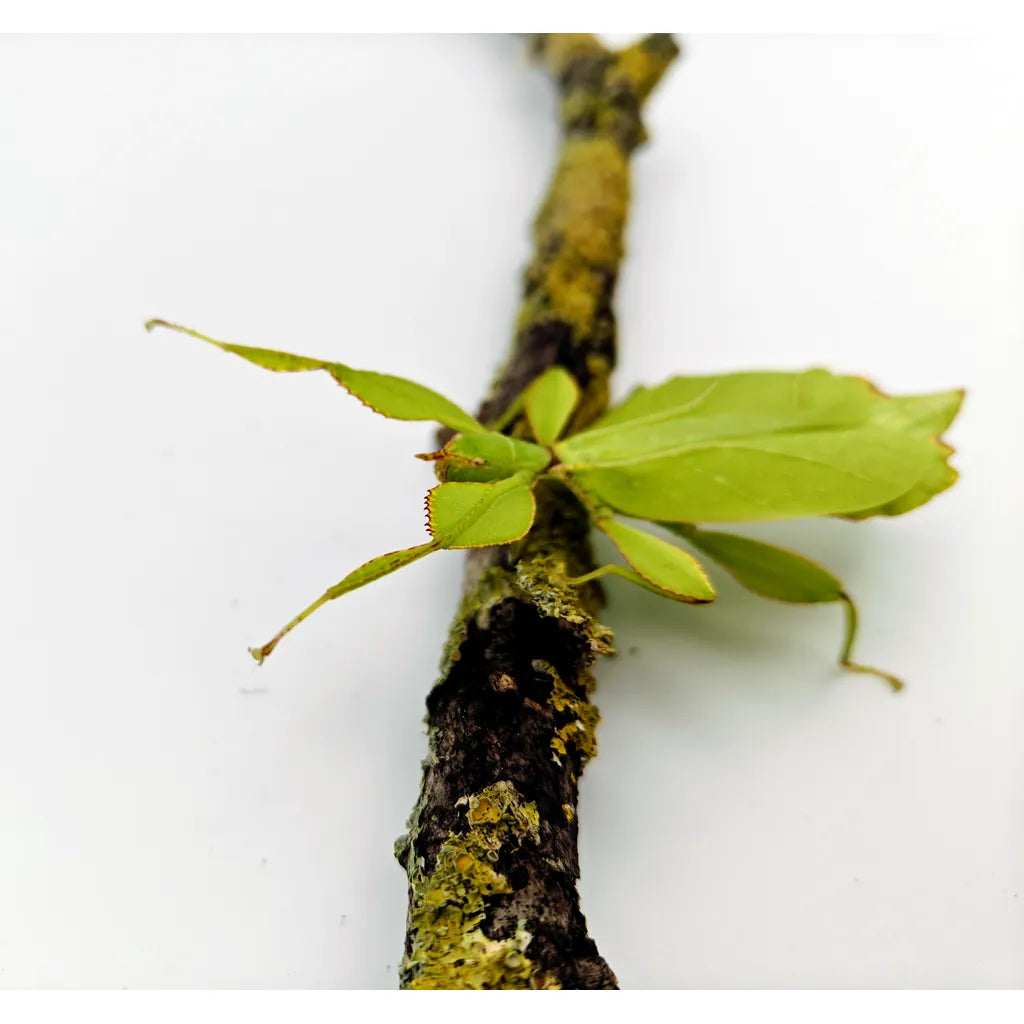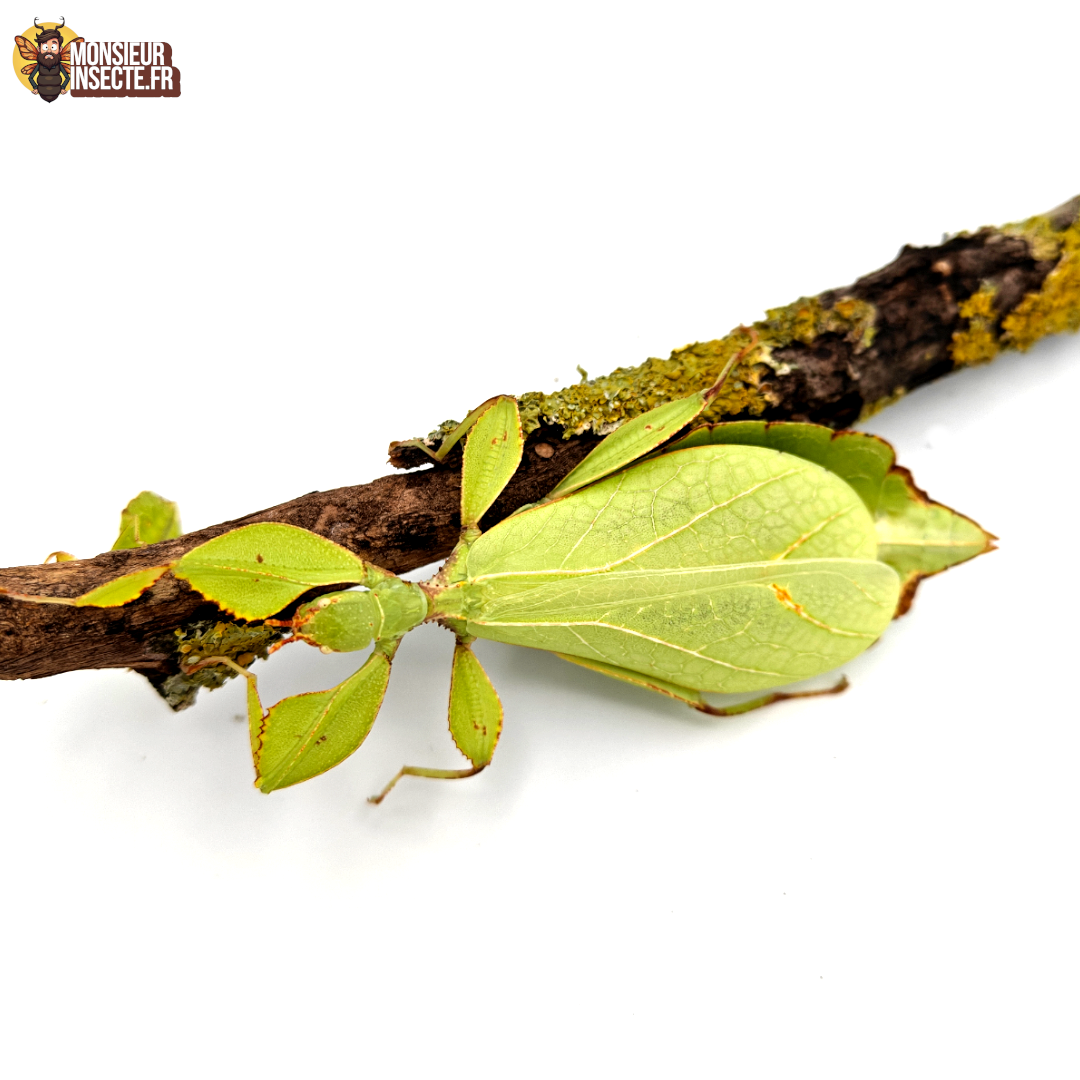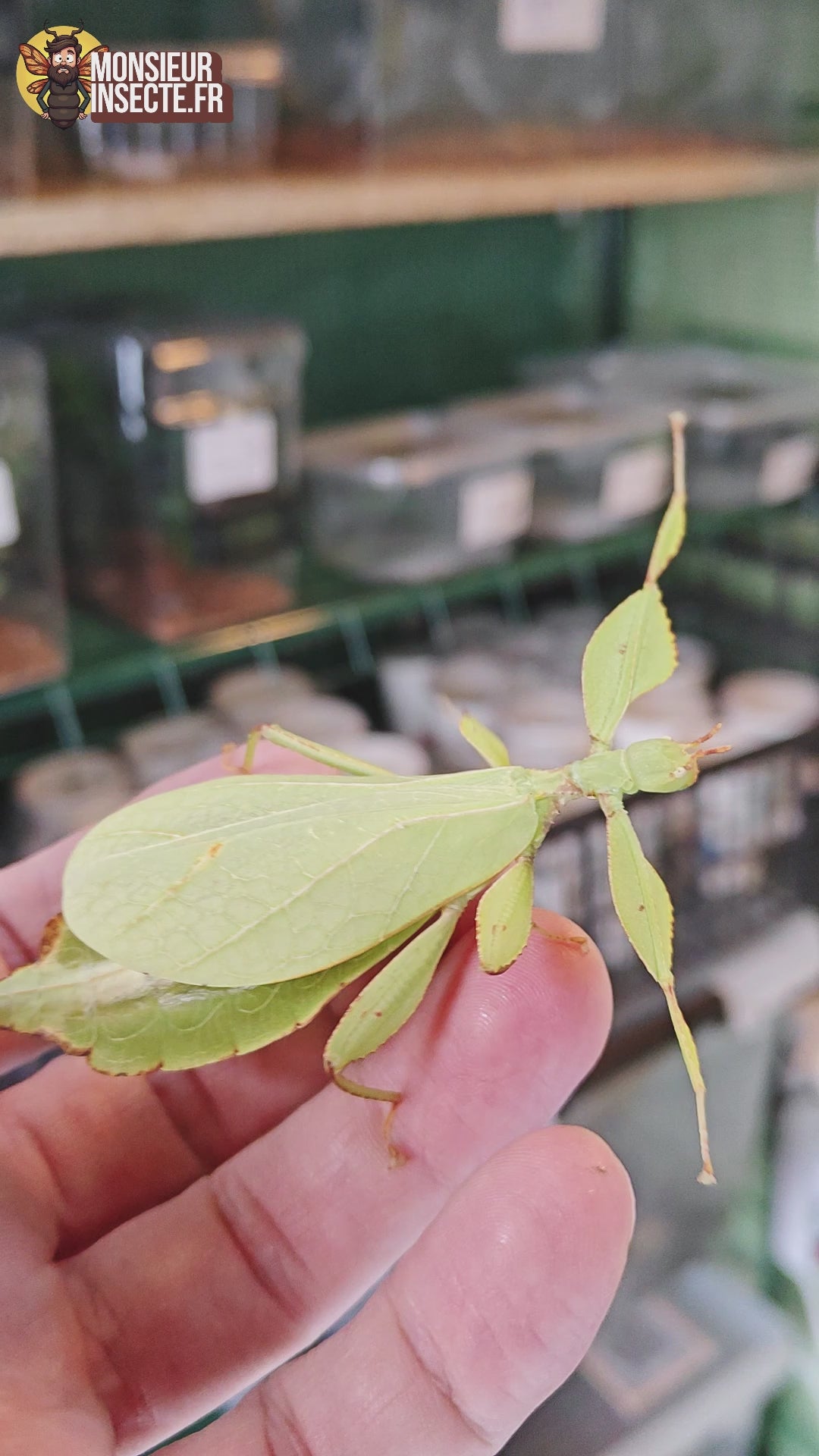





Stick insect | Phyllium philippinicum
Stick insect Phyllium philippinicum - Exotic insect for breeding and collecting
Discover the Phyllium philippinicum stick insect, a true masterpiece of nature! This leaf insect, native to the Philippines, is an undisputed master of mimicry. With its finely carved wings and body, it perfectly mimics leaves, reproducing their structure down to the veins and imperfections, making it fascinating to observe. This camouflage allows it to escape predators such as birds and spiders.
Easy to breed, this stick insect is ideal for insect enthusiasts and those curious to observe a living being with a unique reproductive mode. It feeds exclusively on plants such as oak, bramble, raspberry, mulberry, and guava. This dietary pattern makes it an excellent example of a reproductive strategy and adaptation to its environment. Its mandibles allow it to cut leaves with precision.

Fact sheet: Stick insect Phyllium philippinicum
Breeding and living conditions
-
-
Difficulty : Easy - This stick insect, although calm, has a curious and active nature. It often remains on its host plant, but requires suitable humidity. Spraying water once a day is recommended.
Be careful to avoid mold. -
Temperature : 22-26°C - It likes moderate temperatures + tropical climates.
-
Humidity : 70-80%
-
Food : Bramble leaves, raspberry, rose, oak, privet.
Mode of reproduction
Phyllium philippinicum is distinguished by its reproduction by parthenogenesis , a fascinating process that allows a female to lay eggs without fertilization. However, sexual reproduction is also possible thanks to males, although these are smaller and winged. Incubation of the eggs lasts between 4 and 6 months, depending on whether they are fertilized or not. The reproductive cells of the females ensure viable offspring, making it easy to maintain a population in captivity.
During its life cycle, this insect goes through several larval stages, undergoing several molts before reaching its adult size: this is the imago. The larvae already resemble adults, although their green coloration can vary depending on their environment. Some insect larvae can be prey to predators such as ladybugs or bedbugs. Be careful to close your terrarium properly ;)
Characteristics and behavior
-
Character : Very calm, discreet, easy to handle.
-
Lifespan : Between 6 and 12 months after hatching.
-
Size : Female: 8-10 cm; Male: 4-6 cm (thinner and winged).
-
Sexual dimorphism : The difference between males and females is marked, a common phenomenon among insect species.
The Phyllium philippinicum stick insect has a morphology adapted to its secretive lifestyle. Its elongated body is segmented into a thorax and abdomen, and it has several pairs of legs allowing it to cling to stems and twigs. Its antennae are used to detect its environment, and its mouthparts are adapted for chewing leaves.
Breeder's Note
The Phyllium philippinicum is a touching species that readily interacts with its environment and its keeper. It is not uncommon for it to adopt postures evoking social behavior, raising its front legs as if seeking contact. Thanks to its unique reproductive mode and its adaptation to the terrestrial environment, it constitutes a fascinating subject of study for amateurs and scientists. It can be observed in a suitable vivarium, with a humid substrate favoring its development.
Adopt a Phyllium philippinicum and immerse yourself in the captivating world of exotic insects!
-

